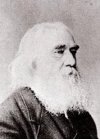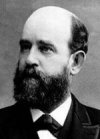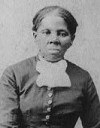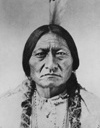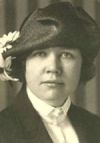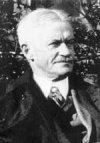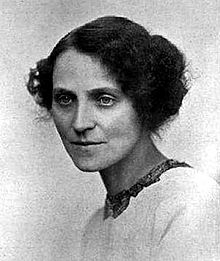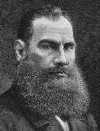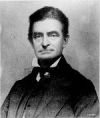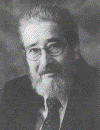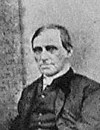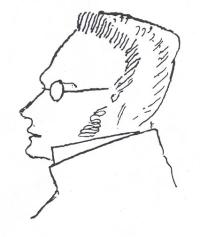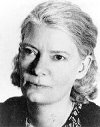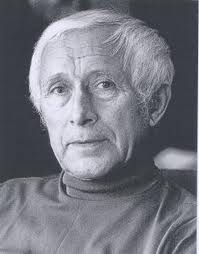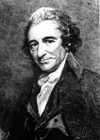Professional Suicide, Part I
Via the Legal Profession Blog, this disciplinary case out of Illinois, in which the review board has recommended suspending an attorney for three years and until further order of the court, and found his statements not protected by the First Amendment, caught my attention:
Respondent continues, even with the benefit of hindsight, to stand by his statements as “100% correct”. He expresses little comprehension of the harm caused by his conduct. While Respondent was not previously disciplined, his conduct in the four matters outlined in the Administrator’s Complaint was not isolated and continued over the course of many years. He repeated many of the statements at the hearing. The Hearing Board stated, “An attorney who repeatedly takes adverse rulings in client cases personally and who is inclined to believe he was racially discriminated against whenever he feels he was treated unfairly poses a danger to our court system. This is especially true when the attorney’s response to these feelings is to make insulting and offensive accusations about the court system and its judges.” We agree. Respondent’s conduct does not serve the interests of his clients or the legal system. We are concerned that Respondent, if allowed to practice, would continue to engage in similar misconduct if faced with an adverse ruling by a judge.
I recall a conversation in a law school seminar class at the University of Wisconsin back in 1998 or 1999. Another student in the seminar, who like me was also on law review and whose article like mine had recently been selected by the editors for publication, asked me what my article was about, so I told her. I asked her why she asked. She said she’d wondered aloud to one of the editors whether the topic of her article (something having to do with education) was too controversial and might hurt her career, and the editor told her: “You should see what John Kindley wrote.”
A funny thing about that article is I did not set out to argue for mass litigation from coast to coast against the abortion industry for failure to inform women considering abortion about the scientific evidence linking induced abortion with increased breast cancer risk. Rather, when I proposed the topic to the editors at the outset of the process, I proposed only to prove the “duty” to disclose this evidence going forward, figuring that the “breach” and “causation” hurdles of an actual med mal case would be insurmountable. The editors tried to dissuade me from even this narrow topic, suggesting I write on something less controversial, like partial-birth abortion, instead. They also indicated that if I wanted to write on this topic I would need to demonstrate the actual viability of an actual cause of action, since it would not be of interest to the bar if I didn’t. This struck me at the time as a game of hide-the-ball, since I was well aware that usefulness to practitioners was hardly a prerequisite for getting a law review article published.
Props to the editors, all of whom described themselves as “pro-choice,” for keeping their word, after I’d made my case. Since then, more than one person has told me that the publication of my article is an embarrassment to the Wisconsin Law Review. If so, the embarrassment could have only been heightened when shortly after its publication the article was distributed to every member of the U.S. House of Representatives by then-Congressman Dave Weldon, M.D., along with a “Dear Colleague” letter urging them to read it.
Prior to the article’s publication, I had asked a few practicing attorneys to review a draft, to see whether it “held water,” and whether there was anything I’d missed or was not aware of that would keep it from working in the “real world.” One of these was a high-powered plaintiff’s side med mal attorney in Chicago, whose contribution, gleaned over several visits to his office, is recognized in the first footnote of the article. Another was a partner in a high-powered plaintiff-side toxic tort firm in Chicago. Although the latter lawyer met with me for well over an hour after she’d read the draft, and expressed to me her conviction (based on the dynamics she’d seen in her own practice) that the reason the risk wasn’t being disclosed in 1999 is because, based on the history of the evidence, abortion providers should have been disclosing it years ago, and were surely afraid of lawsuits based on their past negligence, and assured me that she could see no practical holes in the article that would keep the cause of action it outlined from being successfully implemented in the real world, she nevertheless asked me not to thank her for her help in the first footnote of my law review article.
I spoke with a seemingly-sympathetic law prof about the article after class one day. He asked me if I was married, or had any kids. When I said no, he said I might want to grab this thing by the tail and see where it takes me. In retrospect, I can’t help but wonder whether this was a reference to the end of Moby Dick.
After law school I headed for an “internship” at one of the most prestigious plaintiff-side med mal and criminal defense firms in Washington, D.C., at the invitation of a partner who was one of the most well-respected plaintiff-side med mal attorneys in D.C., on the strength of my article, which he’d read. On the way there I swung by New Orleans, and met with a partner in a plaintiff-side med mal firm there, and a partner at a Big Law firm who’d defended the tobacco industry in many cases. Both were interested, and the latter was especially enthusiastic about the cause of action proposed in my article, and told me to call him if things didn’t work out in D.C.
By this time I was convinced I was on the cusp of something far bigger than the tobacco and asbestos litigation. I was obsessed, I think, to this very day, understandably and rightly. The whole purpose of my going to D.C. was to help make something happen. This was not my imagination talking, as it was discussed with the partner before I got there. A few weeks after graduating from law school I taught a CLE in D.C., along with the partner and one of his associates, on the substance of my law review article. I didn’t care about money, and little about fame, but I knew I needed a mentor, whoever it was, and I knew I wanted more than anything to be part of what I thought was the inevitable dismantling of this enormous injustice. What could stop it? There were thousands of potential plaintiffs across the country, if only they knew. If one judge bent the law in order to throw the case out, the law was clear enough that certainly not all judges, everywhere, would. And all that was needed was one case to get the avalanche started. I was not so full of myself as to dream of being lead counsel in the leading cases, and of cross-examining the defendants’ experts and of waxing eloquent to the jury in closing argument. All I wanted to do was to make sure it happened, sooner rather than later, and I wanted to be there and help it happen.
But it soon became apparent that this partner was up to his eyeballs in work that was making him a whole lot of money. I saw little of him, and was basically left to my own devices. At some point, after I’d been there a month or so, he told me he’d talked to the medical expert he normally relies on to review the cases he takes (he hadn’t talked to him before I got there?), and this expert said he thought the evidence linking oral contraception with breast cancer risk was stronger than that linking induced abortion with breast cancer risk. (Maybe, maybe not, but the fact is patients have been informed about the increased breast cancer risk associated with oral contraceptives for years. No cause of action there.) I saw the writing on the wall. He told me, truthfully, that most lawyers would give their left nut for a job at his firm. He knew I didn’t care. I left shortly thereafter. I returned to Wisconsin, and called the Big Tobacco lawyer in New Orleans. He got back to me a little later, after he spoke with the firm’s managing partner. It turned out the firm wasn’t interested in pursuing litigation based on failure to disclose the evidence linking induced abortion with increased breast cancer risk after all, but I could submit a resume if I wanted a job. I talked with a medium-sized firm in Chicago, where a lawyer I knew well was a partner. During the interview, the managing partner told me they didn’t pay as well as the big firms. I couldn’t have cared less. But he also told me the firm couldn’t take on any cases based on the abortion-breast cancer link. I politely thanked him for his time. Then there was the high-powered plaintiff-side firm in Philadelphia. I was invited to an interview with all the partners in the firm by the older lawyer who’d started the firm, and who was very enthusiastic about what I was looking to do. I felt like I made a good impression, except for one young buck who seemed to look at me like I had an eye in the middle of my forehead. A few weeks later I called the lawyer who’d started the firm. He said he thought I’d told him I had some experience practicing law. This conversation was just two or three months after I’d graduated from law school. I’d never told him any such thing.
My turning down all these good jobs might sound arrogant as hell, and is if I wound up getting exactly what I deserved, but the fact is I never wanted to go to law school in the first place. My going to law school was largely a traffic accident. (It was not my idea, but that of a then-significant other, after it had dawned on me that the life of a philosophy professor toward which I’d been heading was largely one of dependence and pedantry.) Nevertheless, I distinctly remember praying, during the time that the law review editors were deliberating on whether my article would be one of the approximately one out of ten student articles selected for publication, “God, if I never accomplish anything else, let me accomplish this.” God, apparently, answered my prayer, but took me at my word.
It’s not that I think my article was itself particularly brilliant or original. It’s that I proved in it beyond any shadow of a doubt what I set out to prove: that abortion providers have a legal duty to disclose to women considering abortion the evidence linking induced abortion with increased breast cancer risk; and that I did so in the Wisconsin Law Review, which no one could accuse of a “pro-life” bias, and where it would be permanently available to lawyers and judges and law students and law professors, and turn up in Westlaw searches relating to informed consent and toxic torts. While I’m sure the law review editors, like me, did not anticipate that the article would be distributed to every member of congress by a congressman, I think they, like me, expected a bigger impact than it has proven to have in subsequent years. One of them volunteered that if they decided to publish the article he didn’t know what would happen, implying he thought anything could happen. Another suggested I shepardize the article a couple years after it had been published, implying he thought it would be widely cited. I did so, but it had only been cited by a handful of articles with a pro-life bent.
It boggled and continues to boggle my mind — and I mean that almost literally — how the biggest and most awful of lies can be successfully hidden in plain sight. The evidence linking induced abortion with increased breast cancer risk has only grown stronger in the years since I proved beyond the shadow of a doubt that women considering abortion had a legal right to know about this evidence. Recently the publication of a meta-analysis of 36 studies from China provides very strong additional evidence confirming the link, and expressly suggests that the steep rise in breast cancer incidence observed in China since the implementation of its “one-child policy” is attributable to induced abortion. And yet the only media coverage of this very important “study of studies” in the U.S. has been in “pro-life” venues. After more than ten years, I have to wonder whether I will live to see the day when this lie will be exposed in all its godawful hypocrisy. From time to time I’ve written about the abortion-breast cancer link here on this blog. While a few denizens of the so-called “practical blawgosphere” have seen fit in the past to take me to task for my thoughts on “Justice,” I’ve never heard a peep of reaction to this enormous injustice out of any of them. The law professor I referred to above, in the same conversation I referred to above, told me that I’d really found my way right into the “the heart of darkness.” I naively imagined I was shining a light on a truth that both sincere “pro-lifers” and “pro-choicers” would come together on. It turns out that almost the opposite is true. It turns out that sincerity is even rarer in this world than we’d feared. It turns out that this is a truth hardly anyone wants to hear let alone repeat.
Let me make a long story short with an image of its finale: Me sitting in an office in Lakeville, Indiana a few years later, participating by telephone in the deposition of my client in the North Dakota false advertising case, listening while an attorney from the Center for Reproductive Law and Policy (the attorney participated by phone from New York and my client participated by phone from North Dakota) tried (unsuccessfully) to turn my client against me in the course of questioning her about what assets she had in order to satisfy the $30,000 judgment against her, to pay for the false testimony of the defendant abortion clinic’s experts at trial.
The North Dakota Supreme Court had unanimously gone out of its way to distinguish its own precedent and to hold that the North Dakota statute under which we’d brought suit was unconstitutional as applied to the plaintiff, contrary to the California Supreme Court’s interpretation of an identical statute. And yet it would be “unfair” of me to adopt the very procedure we instruct juries to follow in criminal cases, and to infer from this conduct and its context a “political” intent? My judgments cost no one their lives or liberty.
I started drinking a lot after that. The alcohol abuse led to drug abuse. It’s no exaggeration to say I’m fortunate to be alive. I’m also, like the President, fortunate not to be a felon. Fortunately, those days are long behind me, and past the statute of limitations. (The nicotine addiction I also picked up during those years, however, remains.)
Where do you go after something like that. I was not always an “anarchist.” Humbled, and aware now that, despite the movies, the law is not meant to undo enormities, I was now willing to start at the bottom, and work my way up like anybody else, doing whatever it is lawyers do. I interviewed for a job with the local prosecutor’s office after the current prosecutor had newly taken office and was hiring deputies. At that point in time the North Dakota false advertising case was on appeal. The panel of several local attorneys, none of whom I knew, who were interviewing applicants for the job, looked at me like I had an eye in the middle of my forehead as I tried to explain what I’d been up to for the last couple years. I didn’t get a call back.
My first experiences of poverty ensued. The experience of paying income taxes while poor led me to Henry George, who led me to Albert Jay Nock.
Years later, still unmentored, I took on a criminal case I wasn’t ready for, and now have on my hands the lost liberty of an innocent man. Yet I’d found a legal key that should have freed him, confirming once again my rueful belief that I could have been a good lawyer, had the stars been aligned differently. But if I’d thought the unanimous supreme court decision in the North Dakota false advertising case was a fluke, because it had largely to do with the politically super-charged nature of that particular case, I was in for a second rude awakening. Or rather, I was in for a recurrence of a nightmare through which I’d passed once before, devoid of sense and light.
Damn right I take these cases “personally.” They have affected me, and my livelihood, personally, and tangibly. And this does not even take into account the persons affected who I referenced in the conclusion of the Appellant’s Brief in the North Dakota case:
Requiring the Clinic to disclose those facts it is now denying in its commercial brochures will alert women considering abortion that there is a relationship between abortion and breast cancer risk, enable them to investigate the evidence further for themselves if they so choose, and allow them to make their own judgments as to whether it should influence their decision. On the other hand, not requiring disclosure of these facts would guarantee that women in North Dakota will continue to be misled as to the relative safety of abortion and childbirth, and that they will unknowingly incur a risk that could cost them their lives. Only they, not the Clinic, not the Clinic’s experts or lawyers, not even this Court should decide for these women whether that is a risk worth taking, but without this Court’s help that decision will continue to be made for them.

 Follow
Follow